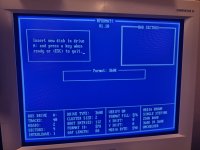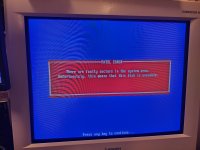ElectroArc
Experienced Member
Ok, so I tried a new app called Strobe RPM Tachometer Lite, and discarded the pattern, replacing it with just a single rectangle. Can someone else download the app and use it on something they know is a specific RPM to see if the app really works? Because, according to the app, it would appear that the drive is running at 330rpm. Is that within spec? Or would anyone also happen to know which pot to turn to fix that. There are only two on the top, and the one labeled VR2 appears to be secured so it can't be moved. And can it be adjusted while the drive is running, or should I turn it off first and do some trial and error?If the speed is right, you will see one of the dotted lines seem to almost stand still. Never had to do this to a floppy drive, but have with many turntables.




